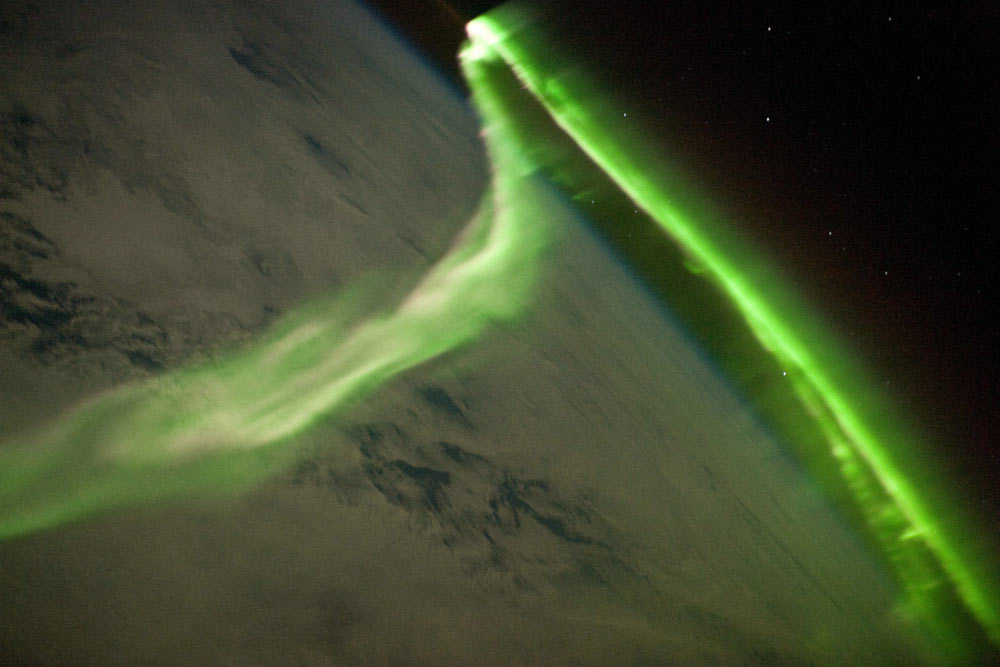Amazing Aurora Seen From Space

A spectacular display of Earth's southern auroras wascaptured on camera by astronauts on the International Space Station during arecent solar storm.
The dazzling aurora has a sinuousribbon shape that separates into discrete spots near the lower right cornerof the image. While the dominant coloration of the aurora is green, there arefaint suggestions of red left of the photo's center. [Stunning aurora photo]
Auroras — ever-shifting displays of colored ribbons,curtains, rays, and spots — are most visible near the north (auroraborealis) and south (aurora australis) poles as charged particles (called ions)streaming from the sun (the solar wind) interact with Earth's magnetic field.
While aurorasare generally only visible close to the poles, severe magnetic storms impactingthe Earth's magnetic field can shift them towards the equator. [More2010 aurora photos.]
Astronauts caught this image of an aurora during a geomagneticstorm that was most likely caused by a coronal mass ejection from the sunon May 24, 2010.
The space station was sailing over the Southern Indian Oceanat an altitude of 220 miles (354 km) when this photo was taken by an astronautmost likely looking towards Antarctica (not visible) and the South Pole.
The curvature of the Earth's horizon (the limb) is clearlyvisible, as is the faint blue line of the upperatmosphere directly above it (at image top center). Several stars appear asbright pinpoints against the blackness of space at image top right.
Breaking space news, the latest updates on rocket launches, skywatching events and more!
Auroras occur when ions in the solar wind collide with atomsof oxygen and nitrogen in the upper atmosphere. The atoms are excited by thesecollisions, and they typically emit light as they return to their originalenergy level. The light creates the aurora that we see.
The most commonly observed color of aurora is green, causedby light emitted by excited oxygen atoms.
- Gallery:Amazing Auroras of 2010
- Top 10Views of Earth from Space
- 101 Amazing EarthFacts

Space.com is the premier source of space exploration, innovation and astronomy news, chronicling (and celebrating) humanity's ongoing expansion across the final frontier. Originally founded in 1999, Space.com is, and always has been, the passion of writers and editors who are space fans and also trained journalists. Our current news team consists of Editor-in-Chief Tariq Malik; Editor Hanneke Weitering, Senior Space Writer Mike Wall; Senior Writer Meghan Bartels; Senior Writer Chelsea Gohd, Senior Writer Tereza Pultarova and Staff Writer Alexander Cox, focusing on e-commerce. Senior Producer Steve Spaleta oversees our space videos, with Diana Whitcroft as our Social Media Editor.
